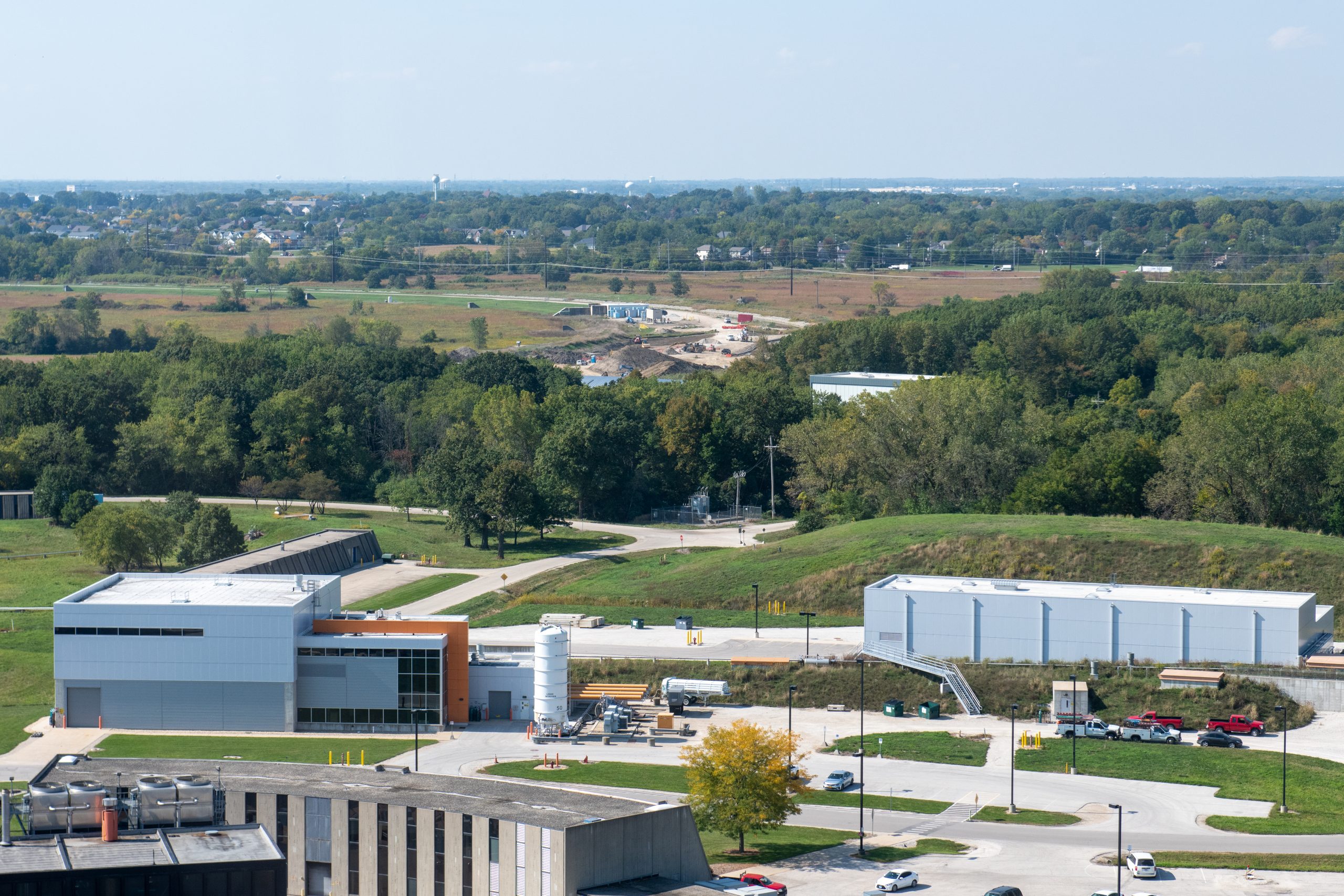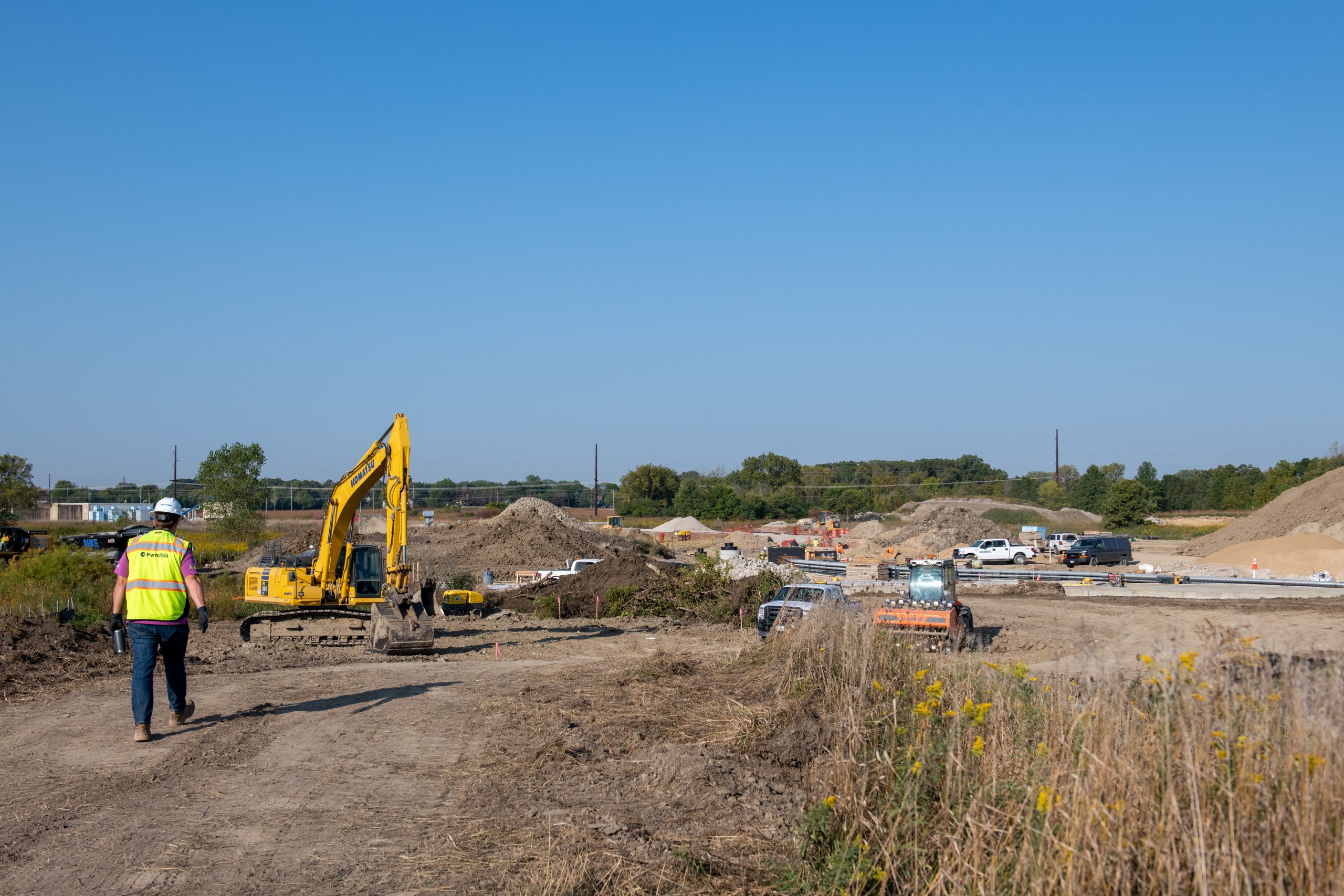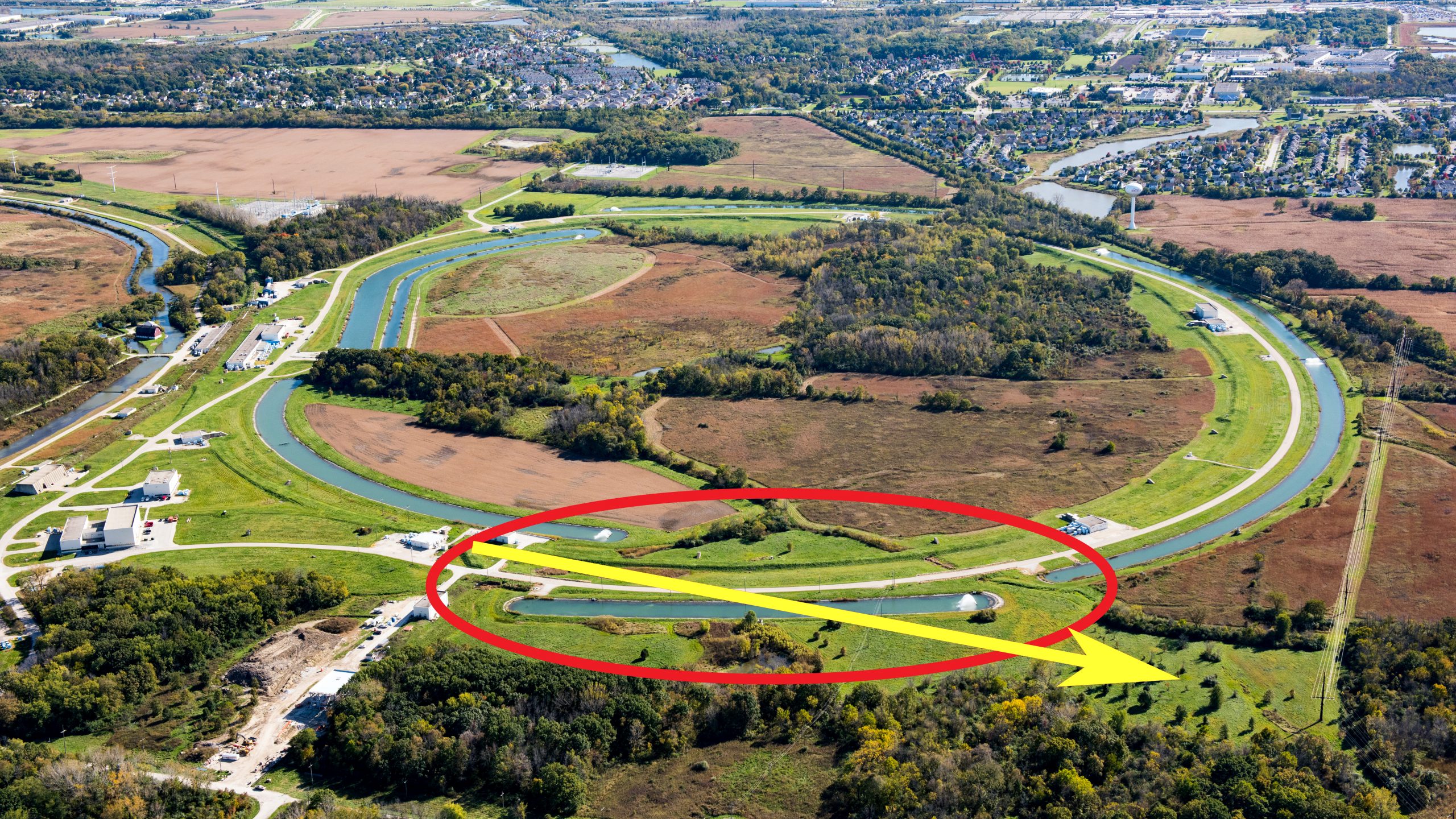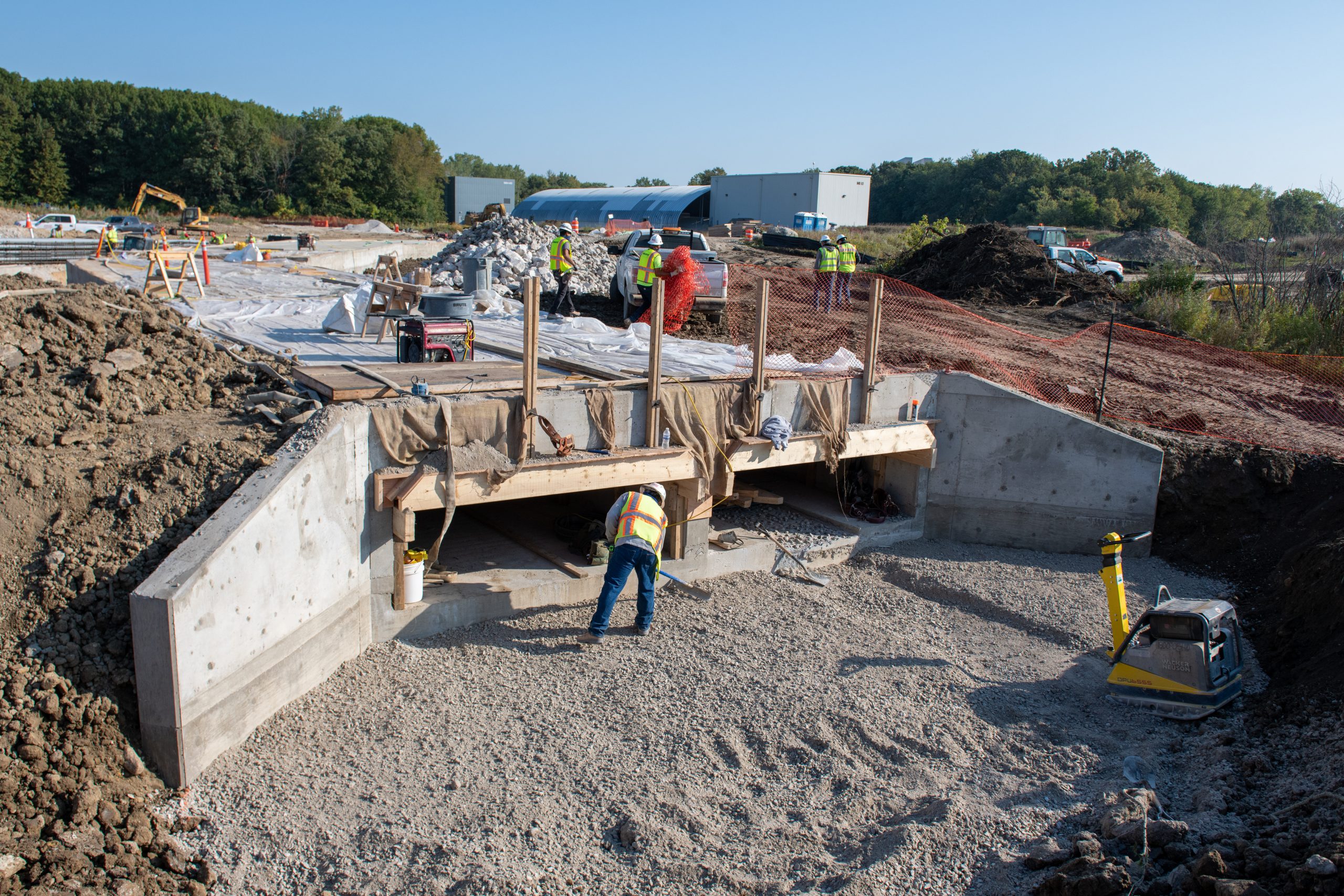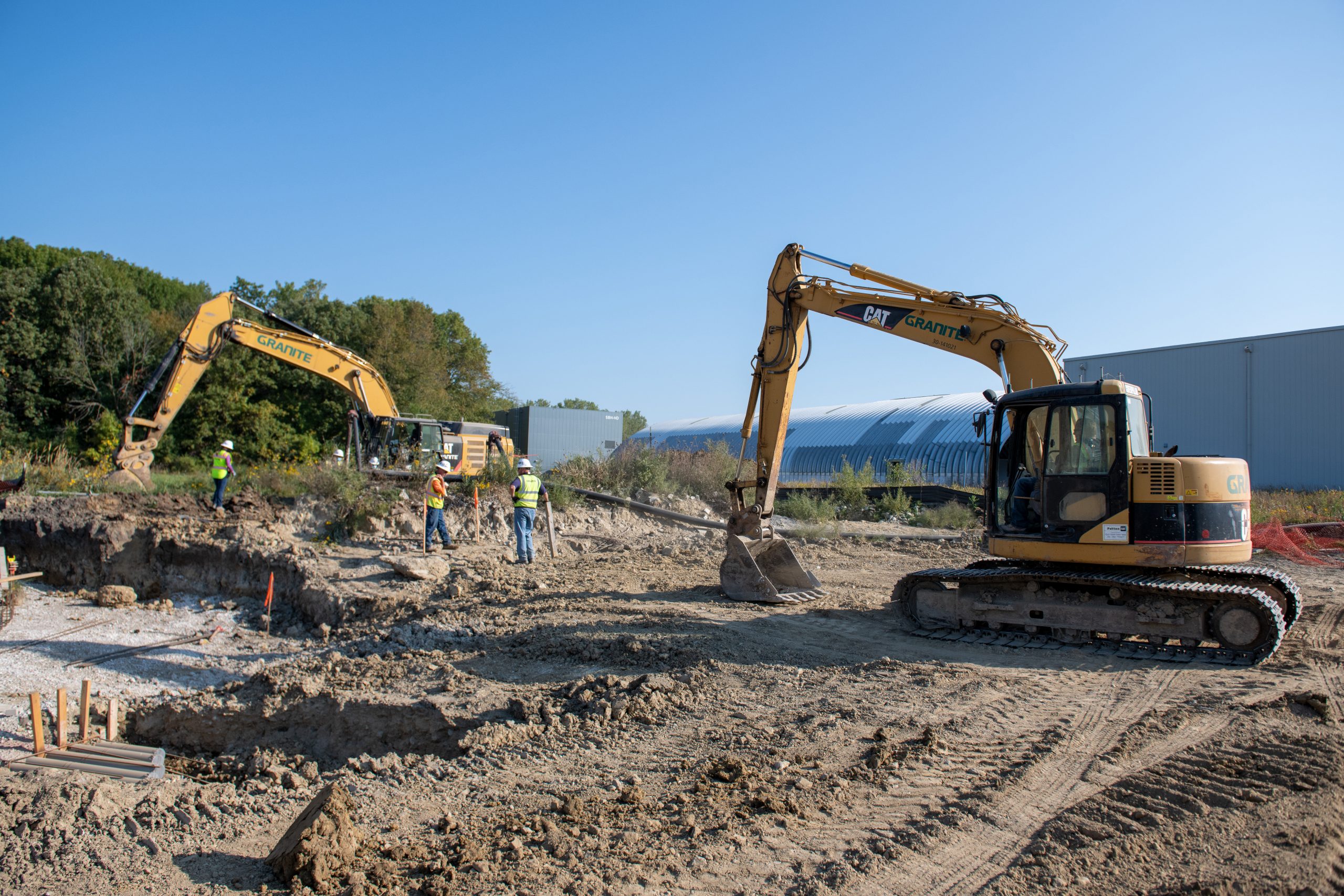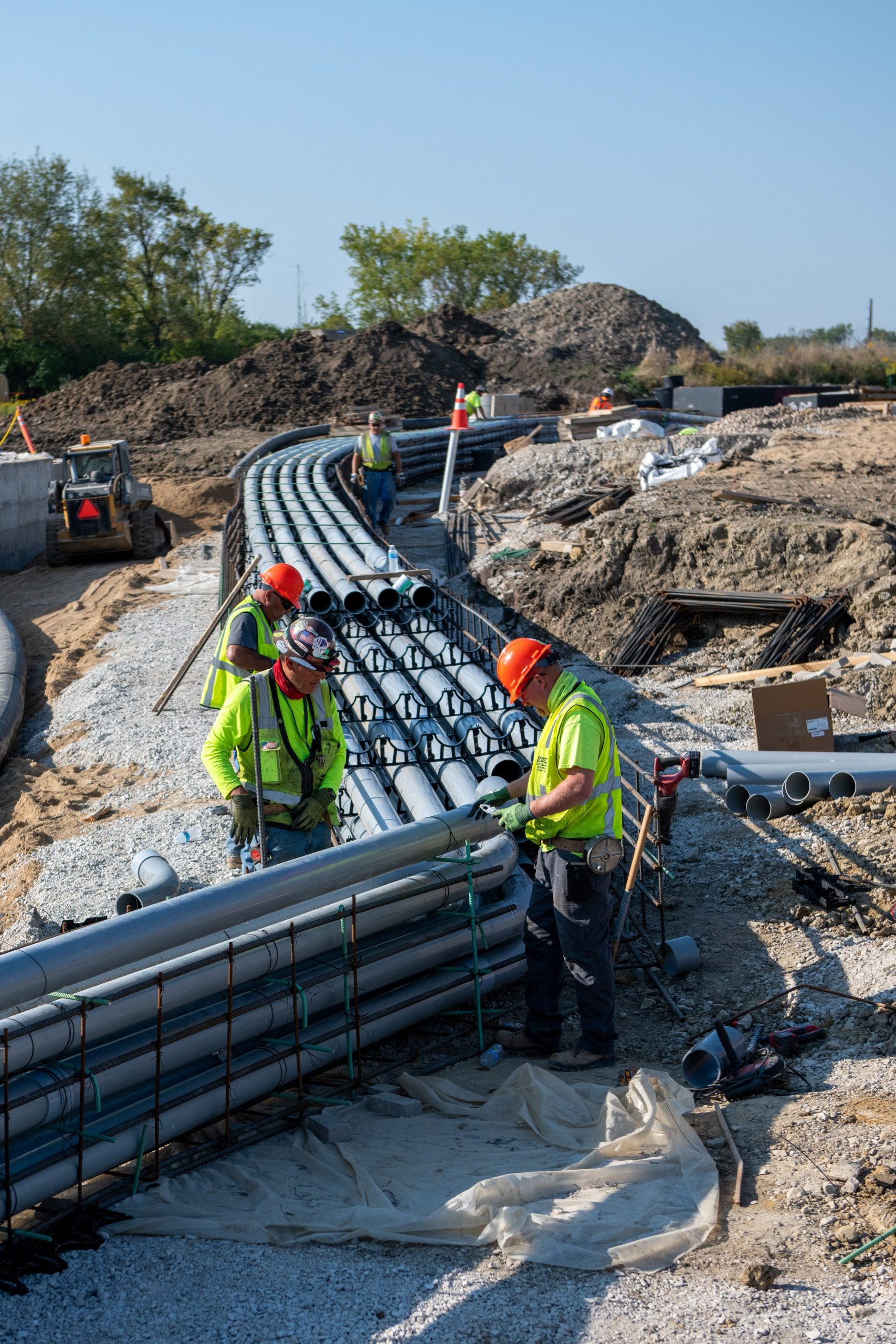All summer long, progress on preparing the Fermilab site for the construction of the Long-Baseline Neutrino Facility has been proceeding at a healthy clip. Now, as summer winds down, that site prep is nearing completion.
LBNF provides the infrastructure that houses and supports the international Deep Underground Neutrino Experiment, hosted by Fermilab. DUNE will comprise a giant neutrino detector a mile underground at the Sanford Underground Research Facility in South Dakota and a large one located on the Fermilab site in Illinois. The development of the latter, known as the “near site,” involves clearing an area currently dense with accelerator-related utilities and other infrastructure.
The site prep work included clearing the site of conflicting infrastructure, including relocating utilities such as power and communications; realigning a small stream called Indian Creek; and replacing an accelerator cooling pond with a cooling tower. The work started last winter, and most of it was completed during the annual summer maintenance shutdown of the Main Injector. The remainder of the prep work will be complete before the lab’s accelerator complex turns on again, and the entire prep work is on schedule to be finished before the end of the year.
View the gallery below for a sample of the busy summer the crews have had preparing Fermilab for LBNF.
The Long-Baseline Neutrino Facility is supported by the Department of Energy Office of Science.
Kate Sienkiewicz is the LBNF Near Site Conventional Facilities project manager at Fermilab.

